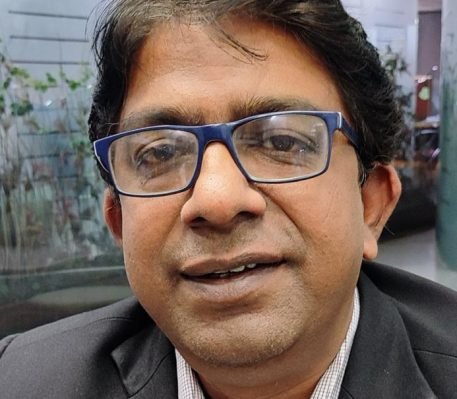Certified Strategic Talent Management and Leadership Succession Planning

Chief Mentor
Dr. Sumit Bhattacharya CHRO-SPML Infra Ltd

Category
Certified Long Course
Talent Management and Leadership Succession Planning Specialist is a high-impact, application-driven program tailored for mid to senior-level HR professionals. This intensive certified course emphasizes real-world strategies and actionable frameworks over academic theory, focusing on equipping participants with the tools to identify, develop, and retain top talent while building robust leadership succession pipelines. Through practical simulations, case studies, and strategic planning exercises, participants will gain deep expertise in workforce planning, high-potential talent identification, succession mapping, and the integration of talent management with business goals. Designed for results, this course empowers HR leaders to become strategic enablers of long-term organizational growth and resilience.
Class Method:
- Interactive workshops
- Role-playing exercises
- Case studies
- Hands-on practices
Assessment and Certification:
- In session exercise
- Application focused exercise
- 1 Capstone Project
- 1 Final Exam
Note: Only 20 seats available to ensure personalized attention and interactive engagement.

- Course Duration: 1.5 Months
- Class Duration: 2 Hours
- Total Session: 12
- Ongoing Batch: Batch 06
- Class Starts: 29 May, 25
- Classes on: Sunday & Thrusday
- Classes Time: 09:00 PM - 11:00 PM
Course Content
এই Advanced Certified কোর্সটি Practical & Application Based বিশদ আলোচনা দিয়ে সাজানো, যাতে আপনি HR-এর ডোমেইনে এক্সপার্ট ও ভবিষ্যতের CHRO হয়ে উঠতে পারেন
Become a strategic HR leader with Global CHRO-Dr. Sumit Bhattacharya ,Recently Awarded as “Asia’s 100 Most Impactful HR Leaders Award 2025”
Lead teams, shape culture, and step into the next CHRO role with confidence.
Module 1: Introduction to Talent Management and Succession Planning
Objective: Establish a foundational understanding of Talent Management and Succession Planning
Overview: Introduction to Talent Management and Succession Planning concepts.
Importance of Talent Management: Aligning talent management with business excellence.
Succession Planning: Understanding the need for a strategic approach to ensure leadership continuity.
Module 2: Building Blocks for Organizational Excellence
Objective: Assemble the essential components for an effective Talent Management program.
Competency Modelling: Identifying and developing key competencies.
Performance Appraisal: Designing performance reviews that drive organizational success.
Succession Planning: Integrating succession planning with career development.
Module 3: Designing and Implementing Competency Models
Objective: Formulate and implement competency models that align with organizational goals.
Competency Frameworks: Steps to create and implement competency models.
Future Workforce Competencies: Projecting and utilizing new competencies for future needs.
Competency Assessment: Tools and techniques for evaluating competencies.
Module 4: Performance Management Systems
Objective: Create performance management systems that enhance organizational performance.
Performance Appraisal Systems: Selecting and designing performance appraisal tools.
Employee Value Exchange (EVP): Going beyond traditional EVP to improve performance.
Conducting Effective Reviews: Strategies for conducting reviews that enhance talent quality.
Module 5: Succession Planning and Career Development
Objective: Develop a comprehensive approach to succession planning and career development.
Growth Potential Assessment: Determining employees’ potential for growth.
Succession Planning Framework: A step-by-step approach to designing a succession plan.
Career Development: Encompassing all employees in career planning initiatives.
Module 6: Coaching, Mentoring, Training and Development
Objective: Implement effective coaching, training, and development programs.
Learning and Development Models: Exploring different training approaches.
Training Effectiveness: Methods to assess and measure the impact of training.
Coaching for Leadership: Using 360-degree feedback and coaching for leadership development.
Module 7: Integrating Compensation with Talent Management
Objective: Make compensation an integral part of the Talent Management and Succession Planning process.
Total Rewards Framework: Understanding the components of total rewards.
Incentive Programs: Designing long-term incentives to retain top talent.
Compensation Strategy: Linking compensation strategies with talent management goals.
Module 8: Employee Engagement and Organizational Culture
Objective: Use talent management to drive a culture of excellence and engagement.
Talent Management Culture: Establishing a culture that aligns with talent management goals.
Cultural Advantage: Creating a competitive advantage through cultural diversity.
Employee Engagement: Strategies for fostering engagement through talent management.
Module 9: Talent Analysis and Planning Tools
Objective: Enhance succession planning and career development through talent analysis tools.
HiPo Identification Tools: Widely used tools for identifying high-potential employees. 9 Box Grid and 4 Box Model.
Workforce Planning: Connecting talent strategy with business strategy.
Talent Management Analytics: Utilizing analytics in talent management and succession planning.
Module 10: Integrated Talent Management Scorecard
Objective: Develop and implement an Integrated Talent Management and Succession Planning Scorecard.
HR Scorecard Models: Understanding and implementing HR scorecards.
Implementation Strategies: Tools and techniques for implementing the scorecard.
Performance Measurement: Tracking and measuring the impact of talent management initiatives.
Module 11: Strategic Empowerment and Leadership Development
Objective: Empower strategic leaders and develop future leadership capabilities.
Leadership Effectiveness: Methods for assessing and improving leadership.
Leadership Competencies: Developing key leadership competencies through targeted programs.
Strategic Empowerment: Strategies for empowering leaders to drive organizational success.
Module 12: Future Trends in Talent Management and Succession Planning
Objective: Explore emerging trends and future directions in Talent Management.
People Equity Framework: Understanding the new thought in Talent Management.
Technology in Talent Management: The role of AI and analytics in future talent management.
Global Talent Strategies: Adapting talent management practices for global competitiveness.
Module 13: Project Presentation
– Make real life project presentation using modules
Registration Now

Milestones and
Achievements
Highlighting our impactful accomplishments and successful milestones with meaningful metrics.
Industry Expert Faculties
Our trainers are highly experienced HR professionals who bring real-world expertise to the classroom.

Dr. SUMIT BHATTACHARYA
25+ Years of HR Experience
Chief Human Resources Officer
SPML Infra Limited - INDIA (The Largest Infrastructure company in South Asia)
"Asia's 100 Most Impactful HR Leaders Award 2025"
Universities connected with University of Minnesota, Yale University, University of Michigan, University of California,University of Toronto, University of Pennsylvania SHRM- USA
